From a young age, Netherlands-based artist, Arjen, was inspired by and studied the work of Rembrandt, Jacob van Ruisdael, Pablo Picasso, Salvador Dali and more recently George Condo. Arjen is a self-taught painter whose work explores the intersection of the simple and the absurd. The result is often expressive and humorous figures. Through his paintings, Arjen creates his own visual language for figurative painting.
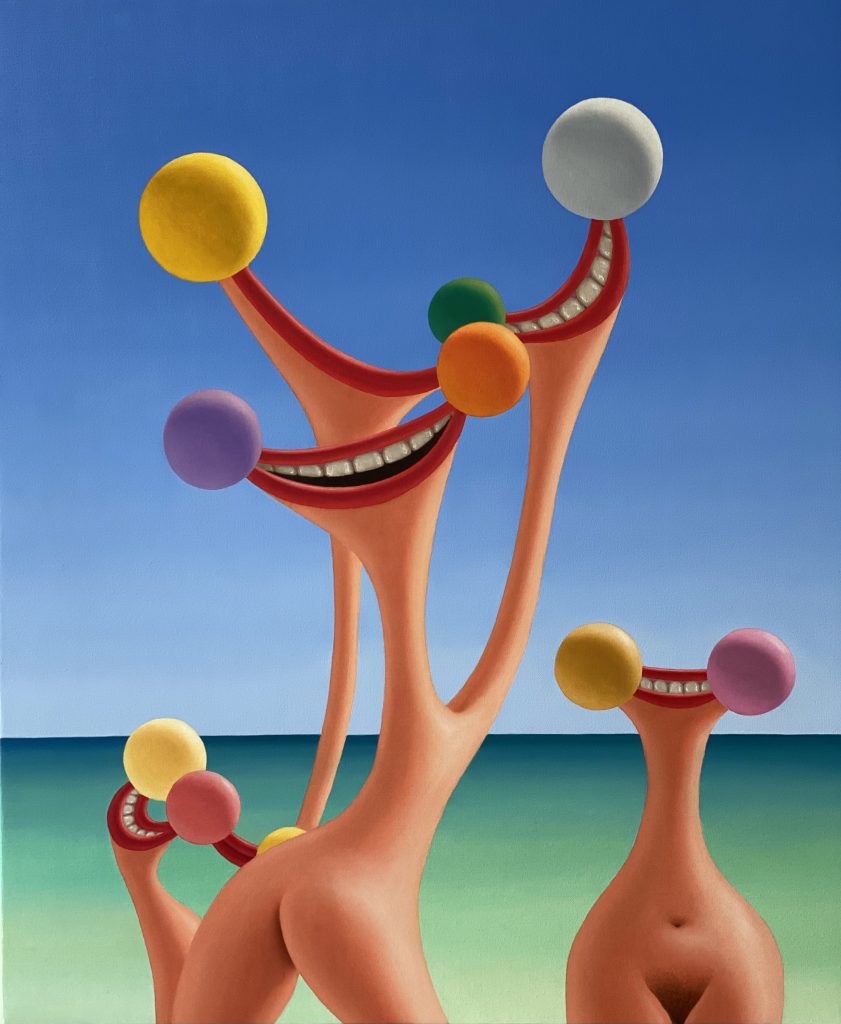
Happy Family at the Beach, Courtesy of the Artist
Tell us a little bit about yourself. Where are you from originally and when did art first enter your life?
One of my first active memories of seeing art is that of visiting my brother’s home when I was around eight years old. The walls of his home were filled with Old Master paintings. As soon as I entered his house I went directly to the first painting I saw and stood there for at least ten minutes in total fascination. At the age of ten I got my first set of oil paint from an uncle, and I’ve been painting since then. As being born in the Netherlands, I had the opportunity to see a lot of amazing artworks by Rembrandt and Ruisdael, so as a child I was highly inspired by them.
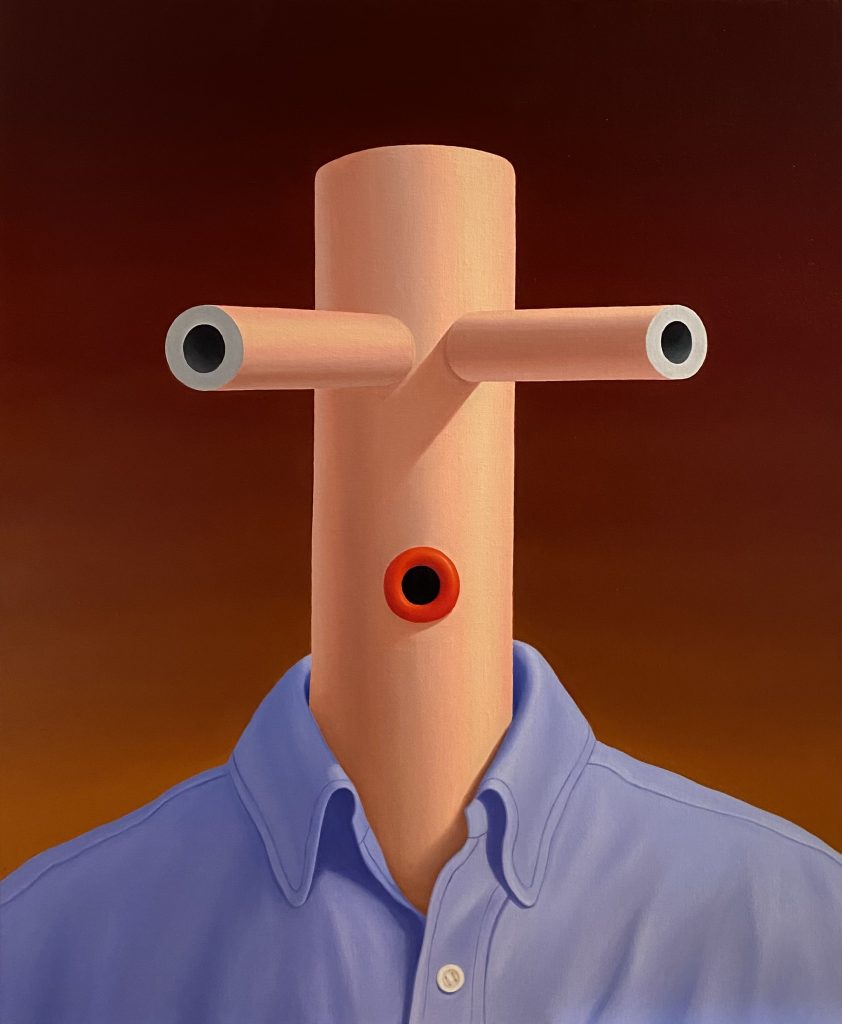
Different Views, Courtesy of the Artist
Has your work always taken on the style it currently embodies?
Getting to my own style has been a real journey. In the recent years I found the way to my own creative source, while using the tools I gathered from studying the great artworks of the past. Inspired by for instance Picasso, I like to use deformation in my work. I also break up the human body in elements, but reassemble them to a new organic unity. Thereby I try to get a stylized clarity and freshness. I think the general idea behind my work is a combination of clarity in line and color, and confusion in the image at the same time. I also like an element of elegance, amazement, exaggeration and humor. I often try to play with the observation and the interpretation of the observer. For instance, where by Picasso or Condo an eye is always an eye and a mouth is always a mouth. I try to make you experience an eye or a mouth that is not actually in the painting.
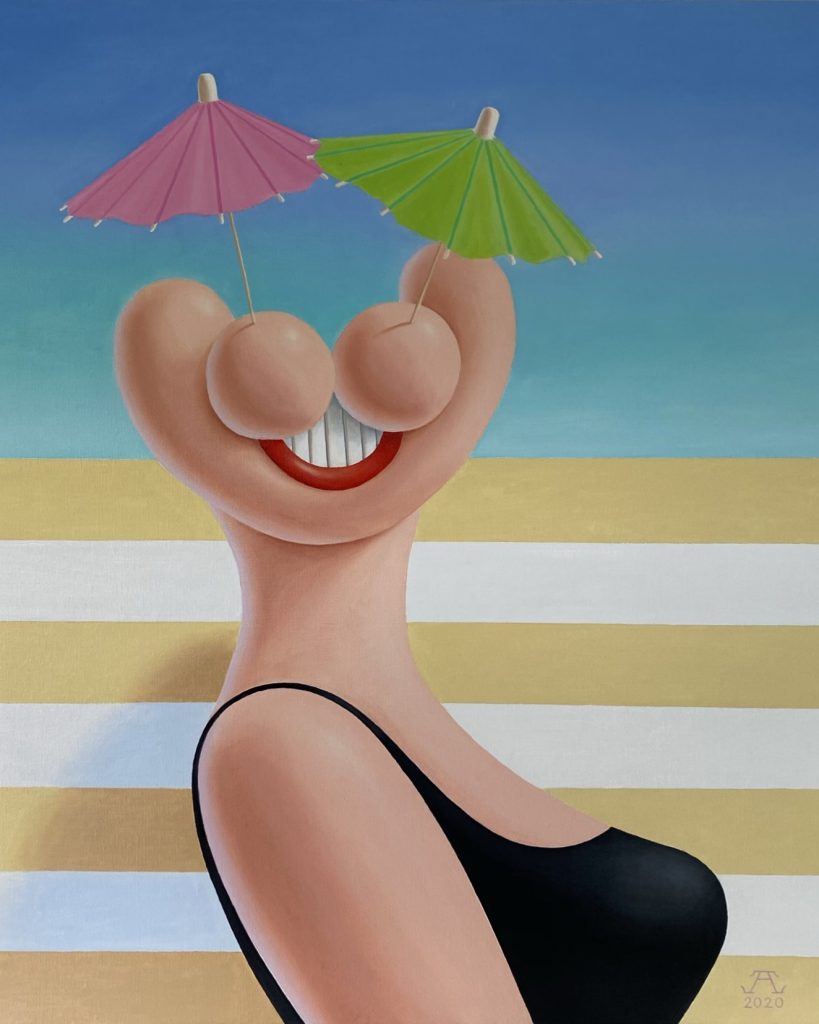
Summertime, Courtesy of the Artist
What’s a day in the studio like for you?
At the beginning of the day I look through my sketches and try some color combinations for a painting. Then I usually make a couple of sketches in oil. Some of them I work out on a larger scale. First in acrylic and the finishing layer in oil. While working I like to listen to music or podcasts. Mostly podcasts about art or a background of the news.
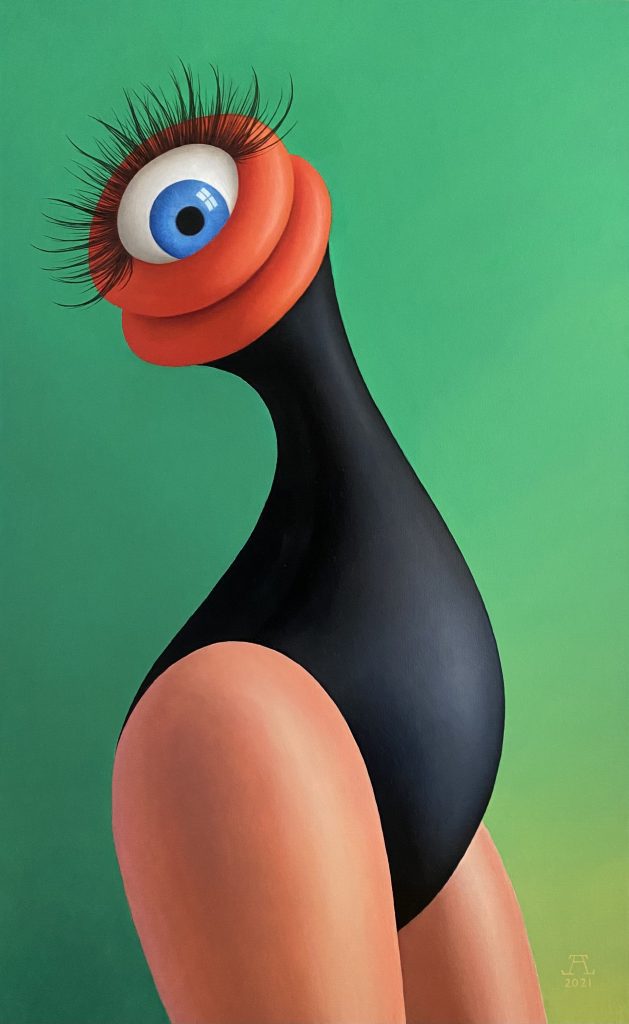
Untitled, Courtesy of the Artist
What’s next for you?
At the moment I have got a lot of interest from several galleries and collectors. Since a few weeks things are moving very fast. This is an exciting period. I’ve been offered two solo shows by international galleries, but I haven’t decided on them yet. I will participate at the Misa.Market art fair with König Gallery and my works will be on
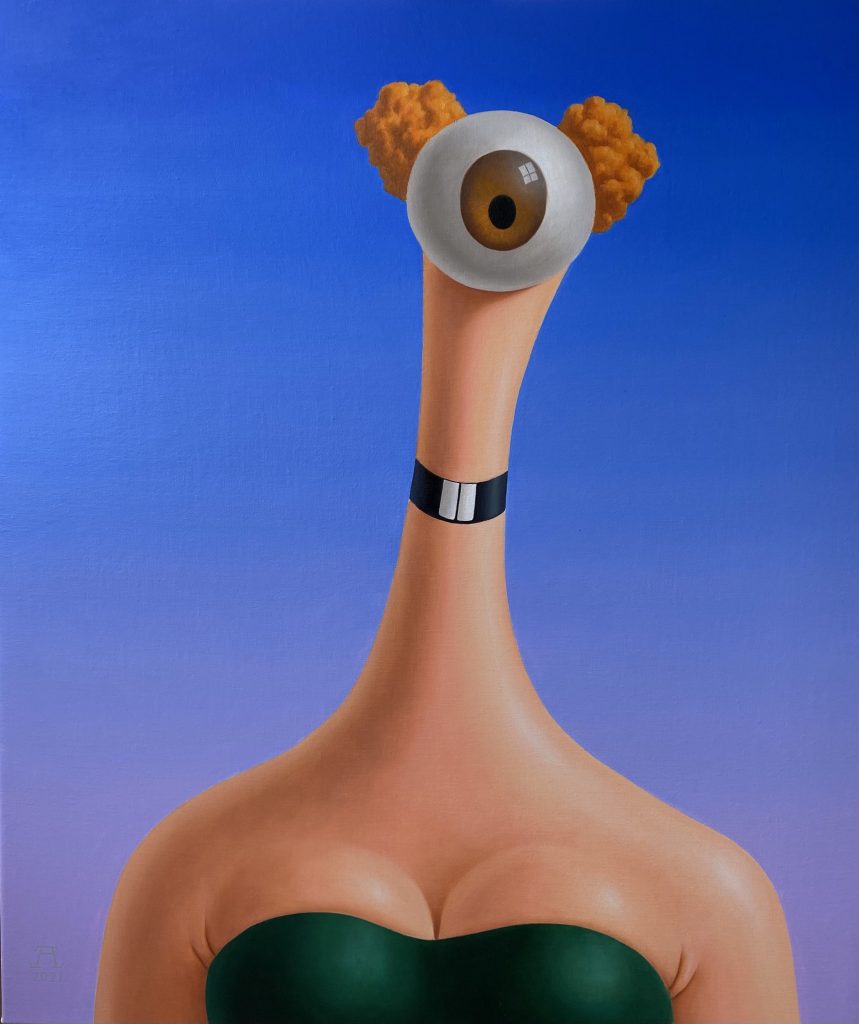
Untitled, Courtesy of the Artist
From where do you draw inspiration?
As soon as I am sitting with a pile of paper and a pencil I immediately feel the urge to create. That is also the most exciting aspect in making art for me. To witness the appearance of a new being. It’s like a birth. It suddenly is there on its own, almost by surprise. That’s the happiest moment. The action of painting itself is more of a physical sensation I like. To see the colors flowing over the canvas is almost a meditative activity.
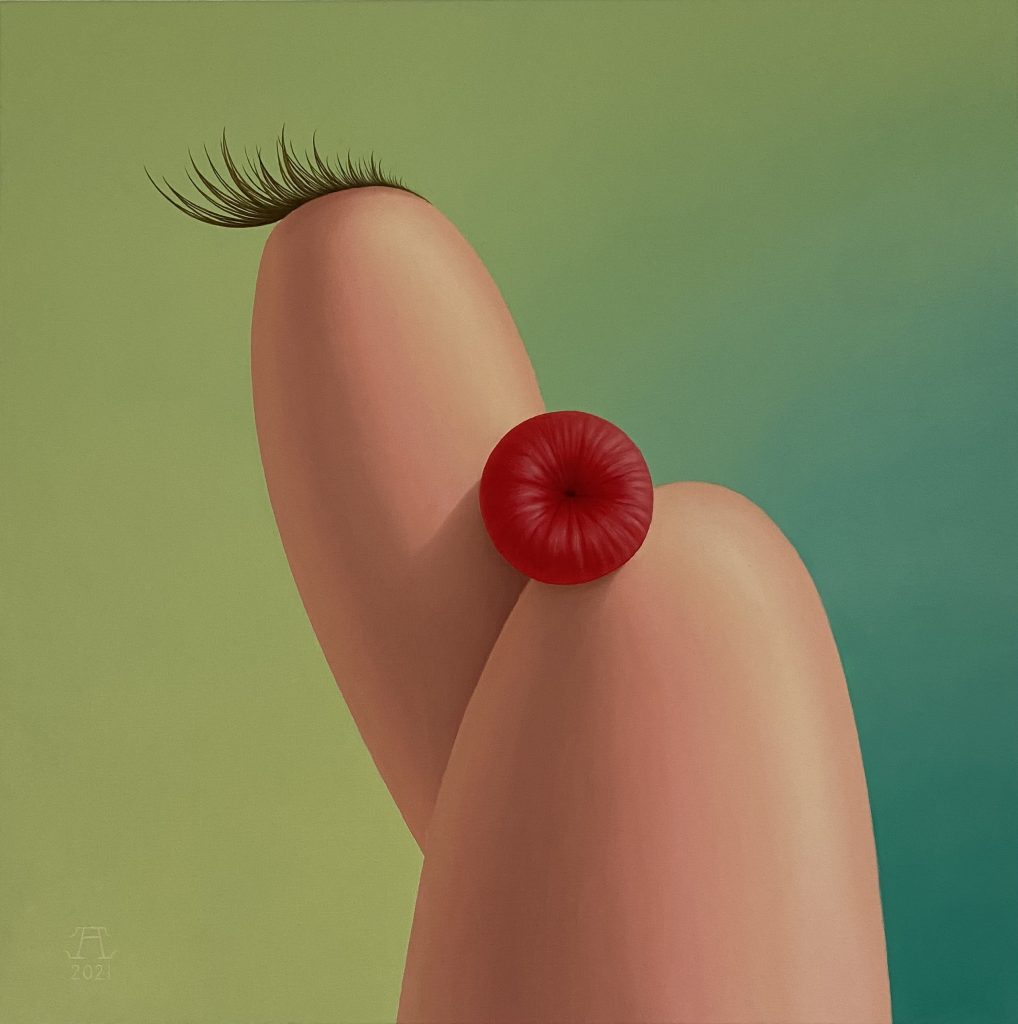
Untitled, Courtesy of the Artist
Have you always painted in the style your work currently inhabits?
During my childhood I spent a lot of time looking at Old Master paintings. I wanted to acquire the same skills as the Old Master artists. Later I found in art books paintings by Picasso, Magritte, Dali and also ethnographic art. Those were really mind-blowing to me. The simplicity, geometrical character, and strong deformations in African masks intensely fascinated me as well. I began to paint my own fantasy landscapes in the style of the Old Masters and later in the Impressionism, Fauvism and Cubism styles. Somehow, I’ve been painting my way through Art History. With the technique that I built and analysis about the way different styles were created, I am now able to shape my own compositions.
What source material do you base your work off of?
I am inspired by all the things that I see around me. For example, peoples’ poses, facial expressions, and even by nature. Everything I experience in my daily life can be an inspiration. All impressions linger in my subconscious and a new idea can just
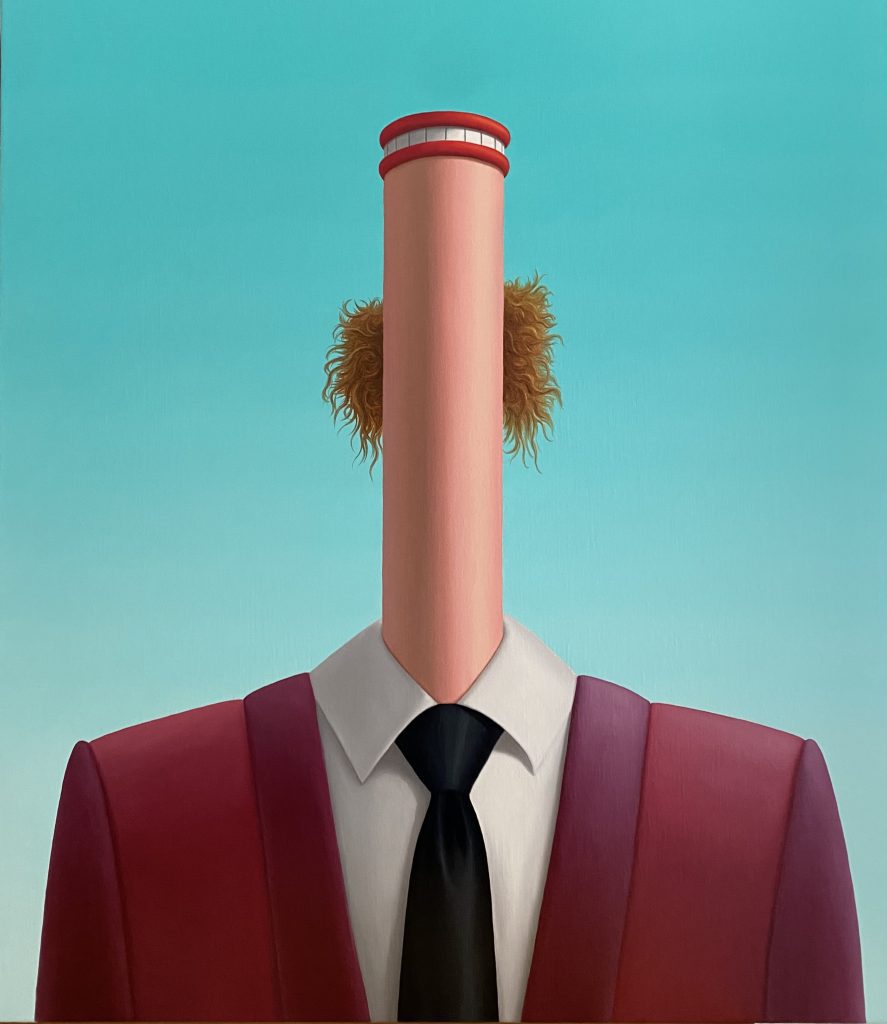
Working Class Hero, Courtesy of the Artist
Does your work reference any Art Historical movements?
I build on the fundaments of many of the art movements of the past centuries. Especially the art movements in the 19th and 20th century – they are so rich. Picasso made a path that I think is so wide that it is almost impossible for an artist not to walk over it. In my case you can see a mixture of for instance Surrealism, Street art and Organic Abstraction, but I try to take a step in a different direction and reach something unique, something authentic.
What is your process like? How do you begin a work?
The first step in my work is the drawing. I’ve made hundreds of sketches. Sometimes I suddenly see an image in my mind and then I rush to paper and pencils and make a quick drawing. Then the process of refining the image begins. I draw several versions and try to understand how the differences of the lines work on paper in relation to the expression of the figure.
At the end of every interview, we like to ask the artist to recommend a friend whose work you love for us to interview next. Who would you suggest?
Instead of recommending an artist, I would like to put Sasha Bogojev forward. He’s a really nice curator that I got to know through Instagram during the COVID pandemic. He always writes very interesting comments on art, and he has a very deep insight in the creative qualities of artists.